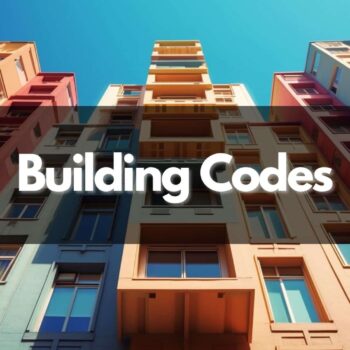A rent roll is a spreadsheet that provides information about a property’s gross rental income and its tenants.
Real estate professionals and property managers must understand the importance of a rent roll in rental housing. If you are unsure how these documents work, now is the time to gain insight from trusted industry experts. Luckily, I have years of experience and am happy to share how these spreadsheets help real estate professionals.
In this post, we’ll define rent roll, explain its many purposes, and demonstrate how to use it for rental property. Keep reading for a full breakdown of this crucial topic!
What Is a Rent Roll?
A rent roll is a report that details information about a property and its tenants. The purpose of a rent roll is to provide a snapshot of how a property performs in cash flow and profitability. This information is helpful to anyone financially involved with the rental property.
For example, using a rent roll can be helpful in the following situations:
- Settling disputes between landlords and renters
- Preparing final closing reports for tenants
- Gathering evidence for eviction lawsuits
- Performing annual audits
- Preparing tax returns
Who Uses Rent Rolls?
It isn’t just landlords who benefit from rent roll documents. The following groups all use rent rolls to determine a property’s rental income and tenant history:
- Property owners
- Property managers
- Property management companies
- Rental property investors
- Lending institutions
So what kind of properties require a rent roll report? Well, you can create a rent roll report for any income-producing real estate.
Examples of income-producing properties include single-family homes, multifamily apartment buildings, office properties, shopping centers, and agricultural land. Essentially, if a property is used for money-making, it will need a rent roll.
A rent roll can be created for an entire rental property portfolio or just one unit within a rental property. For example, the property owner of an apartment building can make a rent roll for the entire building and separate rent rolls for each apartment.
Why Is It Called a Rent Roll?
A rent roll report earns its name because it “rolls up” the information about the property, tenant, and income into one document. Landlords, investors, and lenders do not have to go on a scavenger hunt to find relevant property information; it’s all conveniently listed in the rent roll report.
What Information Is Included in a Rent Roll?
Rent rolls should include tenant information, property information, lease details, and a rental income summary. Now let’s dive deeper into which points are most important on a rent roll.
Tenant Information
A rent roll should contain relevant information about the tenant occupying the rental property. For example, the following details should be included:
- Name of the tenant
- The tenant’s payment history
- The term the tenant has occupied the property
- The expiration date of the lease
Property Information
A rent roll should also contain information about the rental property itself. Examples of relevant property information include:
- Property address
- Description of the property (i.e., square footage, number of bedrooms and bathrooms)
- Who owns the property
- Whether or not the rental property is occupied
Rental Income Details
One of the most important aspects of a rent roll is how much income the property earns from the renter. Examples of rental income details include:
- Monthly rent income summary
- Annual rent income summary
- Any additional earned income
Lease Details
Rent rolls should also cover details about the lease agreement, including:
- The lease term
- Monthly rent amount
- Security deposits
- Additional fees
Why Is a Rent Roll Important?
A rent roll is essential for landlords, investors, and lenders who need information regarding a rental property. Let’s discuss how a good rent roll document benefits each specific party.
For Property Owners and Property Managers
Property owners and property managers rely on rent rolls to assess how the tenant and the property are doing. For example, a property manager can look at a rent roll and determine if a tenant is behind on rent payments. This information lets them notify the tenant and potentially charge them a late fee.
Rent rolls also help property managers track when leases are ending. If a current lease ends and the tenant does not wish to renew, the property owner can begin finding a new renter. However, if a tenant wishes to renew their lease, the property manager can compare their old monthly rent payments to current market rates and set a new price.
A rent roll report also features information regarding a tenant’s security deposit. If the property is damaged, landlords and property managers can use the rent roll to determine how much damage the security deposit covers.
For Rental Property Investors
Rental property investors buy property to lease it to tenants and earn a profit. A rent roll report is helpful to investors because it shows them how much money the property generates.
Investors will be more likely to buy if a property’s rent roll indicates an opportunity for cash flow. However, real estate investors will pass on the offer if a property’s rent roll shows low rental income generation.
For Lenders
Mortgage lenders use a rent roll to determine the risk of providing a loan. Lenders are more likely to make a loan if a property generates a consistent income stream and houses reliable tenants.
Example of a Rent Roll
Say that Arlo is a rental real estate investor who owns multiple properties.
Because Arlo has multiple investments and tenants to keep track of, he uses rent rolls to keep everything organized.
If Arlo needs clarification about when his leases expire, he can refer to his rent rolls, where all the information is listed. If a tenant is not holding up their end of the deal, he can check the rent roll for a breakdown of the lease terms.
Rent rolls also help Arlo make decisions about new potential investments. For example, he can look at a property’s rent roll and decide if it earns enough income to be a worthy investment.
How to Create a Rent Roll
When making a rent roll, you must include all the relevant information about the property that we explained above. You can easily create a rent roll using any spreadsheet software program.
According to G2, here are some of the best spreadsheets software available:
- Microsoft Excel
- Google Sheets
- Apple Numbers
- OpenOffice Calc
- LibreOffice Calc
- Zoho Sheet
- Quip Spreadsheets
Many sites even feature a rent roll template where you can simply input your rental income summary and property information.
Where Does the Data for a Rent Roll Come From?
You may wonder, “Where can I find the information I need to include in my rent roll?
In most cases, the data in a rent roll document comes from the county assessor, the appraisal report, and the rental agreement. The county assessor determines property value, the appraisal report estimates the fair market rental value, and the rental agreement includes the lease terms.
How to Use a Rent Roll
For rent rolls to be helpful, we must understand how to analyze and interpret them. Let’s discuss what landlords and investors should look for when viewing a rent roll report.
Look for High Tenant Turnover
Investors should keep an eye out for any red flags that indicate a property is a poor investment. For example, a property with high turnover rates means tenants rarely renew their leases. This could indicate a problem with the units or property management.
Check Market Rent Rates
Property owners may claim they are currently charging tenants below market rate. This claim leads investors to think they could buy the property and earn a larger profit by increasing rent. However, investors should always compare the rent prices with other properties in the market to ensure this claim is valid.
Examines Fees and Facilities
Investors should also check how much income the property makes from fee payments. For example, tenants may not pay their rent, utilities, or parking fees on time, leading to late charges.
Additionally, investors should analyze how tenants use the property’s facilities. For example, are they taking advantage of the parking garage and other amenities?
This information lets investors know if they could improve fee collection or facility utilization to make the property more valuable and yield a larger profit.
Check the Vacancy History
Investors should also check the vacancy history of a property. If units were left empty for months, this might indicate that the property is difficult to rent. This is a major red flag, as it shows that the local rental market may not be profitable.
Investors should ask for further details if a property shows high vacancy rates. For example, it’s possible that the vacant units may have been under renovation during this time.
Frequently Asked Questions
Now let’s address some frequently asked questions students have about how rent rolls work in real estate.
How to Calculate the Rent Roll?
You can calculate the monthly rent collected by adding the monthly rent payments of each unit in the property. To calculate the annual rent amount, multiply the monthly rent collected by 12.
Do Tenants Ever Use Rent Rolls?
In most cases, tenants do not have access to the rent roll document. However, tenants should still track their monthly rent to avoid missing or late payments. A record of payment amounts and dates may help a tenant in the case of a rental dispute with their landlord.
Can You Buy a Rent Roll?
If a property manager leaves the rental real estate business, they may sell their rent roll to a new property manager. The rent roll will help the new property manager determine essential property details, such as gross rental income and current tenant information.
What to Know Before the Real Estate Exam
A rent roll is a spreadsheet that provides information about a property, its tenants, and gross rental income earnings.
Real estate investors, property owners, and mortgage lenders can all benefit from making and using rent rolls. These documents provide all parties with the information necessary to determine and improve property performance.
You’ll need to know the definition of rent roll and other key terms to ace the real estate exam. Study even more vital concepts using our online Real Estate Flashcards and head into testing day feeling confident.











